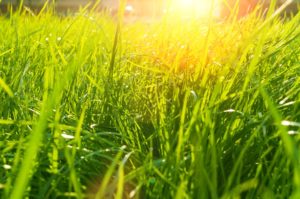Why is it that Utah’s winter’s and water supply have been so pitifully low on snow these last few years?
Maybe its global warming, maybe its just some dry cycle we’re in. Whatever the case, we can be sure of two things:
First, the firefighters will tell us (like they do every year) that this season has the worst fire potential ever. Second, the state will tell us that we are in a drought, and will have to find more ways to save water.
So what do we do if we want to preserve the luscious lawns and gorgeous landscapes that have defined many of our 55+ communities over the years?
The solution is easy, in theory, but sometimes difficult in practice.
Droughts in the forecast…
Oasis in the desert
Utah is in a unique position. Normally, we would be considered a desert climate. I get that we used to have lots of wetlands back before people settled and drained them, but for the vast majority of the state, we have desert.
However, we also have a lot of mountains around us, which are great at collecting water. Thus we have had plenty of water to turn our deserts into lush green yards. The water however is not unlimited in this region.
As water needs to continue to grow, and weather continues to shrink our water reserves, finding more responsible ways of using and saving our water becomes important.
Adding HOA’s into the equation
For most individual yards, you learn how to water your lawns and get it looking nice. Yes, there are a bunch of people who like to flood irrigate not only their yard, but their neighbors with their sprinkler system, but most of us are responsible enough to know that we don’t live in a rainforest.
HOA’s however are a little different. Usually a property manager hires a lawn care crew to take care of the communities lawn. This includes everything from mowing to fertilizing, and yes—watering.
Since these lawn care companies depend entirely on the property manager’s good graces, and the good graces of the property manager depend on how much an HOA board complains, the lawn care guys tend to overwater every lawn.
Kentucky Blue Grass, which is what we usually grow in Utah, can tolerate a lot of extra water. So by overwatering it, they usually don’t get as many brown patches, and the HOA stays happy, and the lawn care guys keep their jobs. There’s a few problems with this though.
First, there’s a lot more water that goes to waste.
Second, they tend to kill a lot of trees and shrubs by drowning them.
We are no stranger to the phone calls that tell us that there is standing water on a property, and that the trees are dying. When we go out there, to see if there’s a problem with the drainage, the water is usually gone, but the trees are dying just the same. The only thing happy is the grass.
By taking a little more care to manage the sprinkler clocks, not only can some of the soggy yard syndrome, along with all its dying plants be solved, but the grass will still be happy. It might take a season to hone, but few lawn care companies stick with the same HOA property long enough to care.
Ideally, someone within the HOA, who has time to volunteer some effort, can really make a big impact on not over-watering. My suggestion to any HOA board, would be to keep an eye on your yard maintenance crews. If you start seeing wet spots, or shrubs and trees that are looking unhealthy, check the sprinkler clocks. Chances are, your lawn guys have upped the times way more than is necessary. Keeping an eye on your watering not only makes for better yards, and better water conservancy, but it also reduces the water bill on your HOA account, which is the number one largest expense on any community HOA fee.

Call Us: 801-653-1291